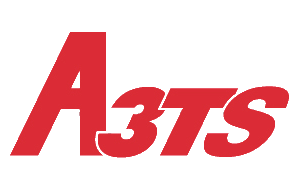Washing - Degreasing before or after treatment
N.B.: The information contained in this sheet comes from reliable sources. Nevertheless, it is provided without any guarantee, express or implied, of its accuracy.
Principle:
The cleaning of surfaces before surface treatment or heat treatment is essential, it conditions before surface treatment the good adhesion of coatings or deposits and before heat treatment the absence of alteration of the equipment, the cleanliness of the parts after treatment, the good diffusion of the elements in the case of thermochemical treatments.
The cleaning of surfaces after treatment, apart from rinsing to eliminate retention of treatment products, is mainly intended for heat treatments including oil quenching to eliminate oil residues in order to provide parts suitable for subsequent operations (non-greasy parts, absence of fumes during tempering, etc.).
The problem of cleaning before treatment is most often to eliminate greasy organic products, coming from previous implementations (cutting lubricants, temporary protection). It can be added chemical elimination operations of oxides, phosphate layers put in place for cold forming operations. In this case, pickling operations will be carried out.
Three main families of metal surface cleaning are used:
Washing with detergents in a washing machine usually combines spraying, soaking, possibly improved by ultrasound, bubbling by vacuum, air injection, followed by rinsing and drying.
Washing in dip lines consisting of a succession of baths that meet the needs, in this line can be placed a bath of acid pickling for example or dephosphatization.
The degreasing with solvents carried out in degreasing machines combining phases in the dip and vapor phase. These machines are either open (subject to compliance with the emission standards in the atmosphere) or closed with extraction of the vapors emitted via filters (most often with active carbons). These closed machines using perchlorethylene are currently the most frequent since the ban on trichloroethylene.
Pour les lessives on distingue les lessives basiques (pH>7) (faiblement basiques): destinées à saponifier les graisses et les solubiliser dans le bain de lavage. Elles sont sans effet sur la nature physico-chimique de la surface métallique. Les lessives acides (pH< 7) (faiblement acides): elles ont un effet décapant et passivant avec conversion chimique de la surface, elles peuvent être une solution d’élimination de certains oxydes superficiels et intervenir comme « facilitateur » de la réaction de surface.
L’efficacité du nettoyage peut être évalué en dehors des méthodes physico-chimiques sophistiquées (analyse de surface, effet corona…) par essuyage à l’aide d’un papier blanc et propre et à l’aide du test de la goutte d’eau.
The following parameters should be monitored for laundry baths:
temperature of the baths
bath levels
concentrations
pH
Rinse water (hardness and cleanliness)
filtration maintenance
respect of emptying frequencies
The discharge of effluents and used cleaning products is subject to standards and guidelines depending on the conditions implemented.
Implementation
Main equipment (furnace, reactor, line, machine...)
Energy and fluids (gases, chemicals, quenching liquids, salts...)
If you are a company interested in being listed on this page, please contact us: a3ts@a3ts.org
